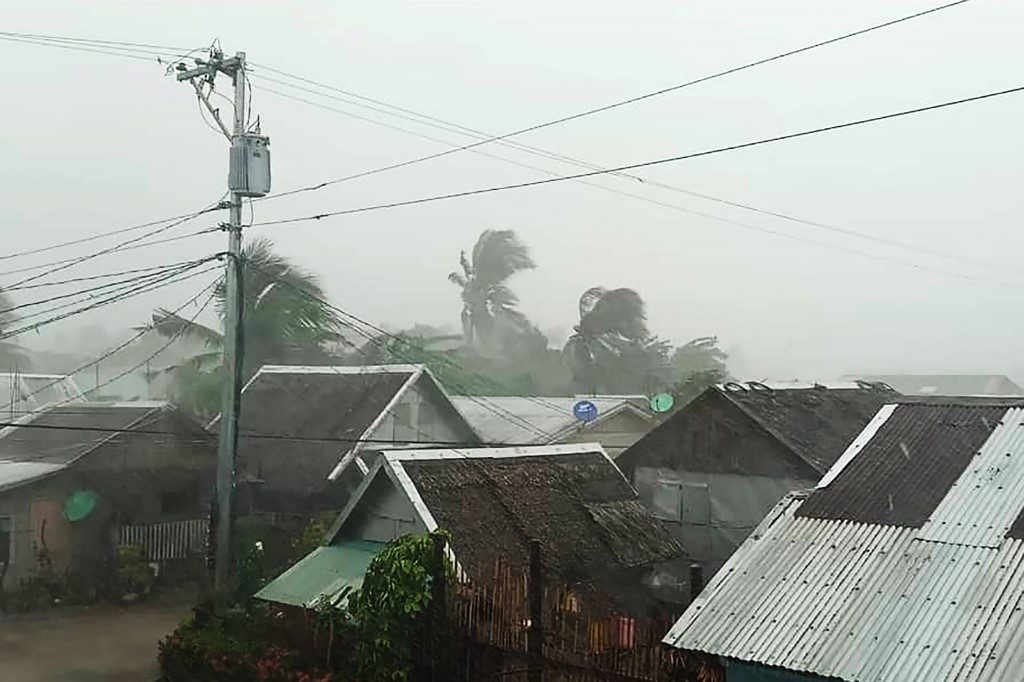SUMMARY
This is AI generated summarization, which may have errors. For context, always refer to the full article.

MANILA, Philippines – While many are familiar with Signal Nos. 1 to 5 for tropical cyclones, few may be aware that these are, in fact, based on wind and not rainfall.
For instance, people tend to anticipate rain – “Nasaan ang ulan, eh Signal No. 2?” (Where’s the rain, it’s Signal No. 2?) – when they should be thinking in terms of wind when it comes to signal numbers.
This is the reason why the Philippine Atmospheric, Geophysical, and Astronomical Services Administration (PAGASA) changed what these signals are called.
From tropical cyclone warning signals, they became tropical cyclone wind signals in 2019.
“‘Yung shift from the term that we previously used…is to give emphasis na itong mga impacts na puwede ‘nyong maranasan sa inyong lokalidad ay dala ng malalakas na hangin ng paparating na bagyo,” PAGASA Senior Weather Specialist Chris Perez said in a Rappler Talk interview.
(The shift from the term that we previously used is to give emphasis that the impacts that you can experience in your locality are brought by strong winds of an approaching tropical cyclone.)
“Ito (winds) ‘yung isa talagang pinaghahandaan natin aside from ‘yung mga posibleng pag-ulan at saka ‘yung mga secondary hazards such as flash floods and landslides,” he added.
(We really prepare for winds aside from possible rain and secondary hazards such as flash floods and landslides.)
For Signal Nos. 1 to 5, these are the corresponding maximum sustained winds and the lead time given so the government and the public can prepare:
- Signal No. 1 – winds of 30 kilometers per hour (km/h) to 60 km/h expected in at least 36 hours
- Signal No. 2 – winds of 61 km/h to 120 km/h expected in at least 24 hours
- Signal No. 3 – winds of 121 km/h to 170 km/h expected in at least 18 hours
- Signal No. 4 – winds of 171 km/h to 220 km/h expected in at least 12 hours
- Signal No. 5 – winds of more than 220 km/h expected in at least 12 hours
“Kapag may bagyo at magla-landfall, tatama sa kalupaan ng ating bansa, o kahit na kumilos na lamang ng malapit sa mga coastal areas natin…automatic po ‘yan, we need to raise [wind] signals,” Perez said.
(If there’s a tropical cyclone and it’ll make landfall, hit landmass in our country, or even if it only comes near our coastal areas…that’s automatic, we need to raise [wind] signals.)
Perez also emphasized the importance of the lead time given.
“That’s the essence of providing a warning. We prepare in advance. Hindi po tayo magre-raise ng [wind] signal kung nandiyan na ‘yung hazard na dala ng isang bagyo (We don’t raise a [wind] signal only when the hazard brought by a tropical cyclone is already there),” he explained.
In instances when only part of a province is covered by a tropical cyclone wind signal – for instance, just the northern, southern, eastern, or western portion – PAGASA also now specifies the municipalities and cities included to help locals better prepare. – Rappler.com
Add a comment
How does this make you feel?
There are no comments yet. Add your comment to start the conversation.